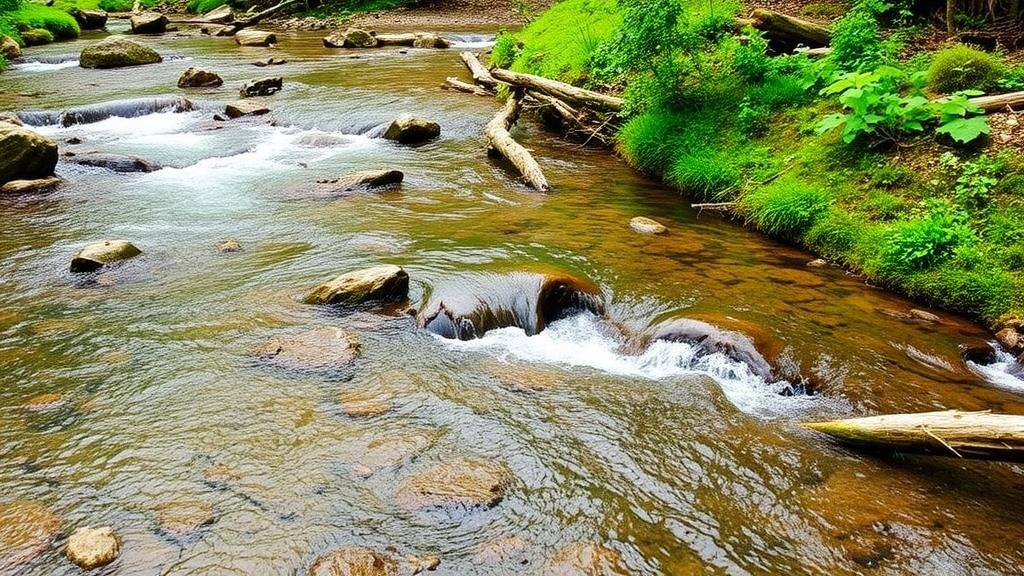Tips for Prospecting in Heavily Silted Streams and Rivers
Tips for Prospecting in Heavily Silted Streams and Rivers
Prospecting in heavily silted streams and rivers presents unique challenges for enthusiasts and professionals alike. Silt can obscure valuable resources, reduce visibility, and complicate the extraction process. But, with the right strategies and techniques, it is possible to successfully prospect these environments. This article explores essential tips for effective prospecting in such conditions.
Understanding Silt and Its Implications
Silt consists of fine particles that are often carried by moving water. It can accumulate in riverbeds and stream bottoms, creating layers that mask underlying materials, such as gold or gemstones. Understanding how silt behaves in water bodies is crucial for successful prospecting.
For example, in high-flow conditions, silt can be agitated and suspended in the water column, making it difficult to see and access riverbed features. On the other hand, during low-flow periods, silt can settle, potentially allowing prospectors to identify and target areas for exploration.
Effective Tools and Techniques
Having the right tools is essential for navigating silted environments. Here are several recommended tools and techniques:
- Pans and Sluices: Use gold pans specifically designed for trapping fine particles. Sluices can also help separate lighter silt from heavier materials, making it easier to locate valuable resources.
- Highbankers: These machines allow for the processing of large amounts of material off-site, which is especially useful in areas with extensive silt.
- Vibrating classifiers: These devices help to sort and separate particles of different sizes, ensuring that small gold flakes are not overwhelmed by silt.
Identifying Potential Prospecting Locations
When prospecting in heavily silted streams and rivers, site selection is critical. Look for specific features that may indicate the presence of valuable materials:
- Inside Bends: The current slows on the inside of bends, leading to potential sediment deposition.
- Rock Formations: Large boulders can create eddies where heavier materials may settle.
- Drop-offs: Steep transitions from shallow to deep water may act as natural traps for heavier particles.
Techniques for Silt Removal
Removing silt effectively is a cornerstone of successful prospecting. Here are several techniques to consider:
- Rinsing: Use a hose or buckets of water to rinse off silt from panned material before prospecting.
- Wet Sifting: This process involves running material through a series of screens in the water, allowing lighter silt to wash away while heavier materials remain.
- Hand Dredging: Simple hand dredges can draw material from the bottom without disturbing too much silt.
Environmental Protection Considerations
As prospectors, it is vital to practice sustainable methods to protect habitats. Disrupting the sediment can have adverse effects on aquatic ecosystems. Always follow local regulations and guidelines, and consider the following:
- Minimize Disturbance: Use non-intrusive methods that do not significantly affect the silt layer.
- Plan for Restoration: After your prospecting, ensure that any areas disturbed are restored to their natural state.
Conclusion
Prospecting in heavily silted streams and rivers requires skill, patience, and an understanding of both the challenges and opportunities presented by silt. By utilizing the appropriate tools, identifying optimal locations, and employing effective silt removal techniques, you can enhance your chances of discovering valuable materials. Always remember to respect the environment, ensuring that your prospecting activities do not compromise local ecosystems.
As a proactive measure, consider joining local prospecting clubs or organizations that can provide support and additional insights into best practices in your area. Whether you are a novice or an experienced prospector, collaboration can lead to better outcomes and a more enjoyable experience.



